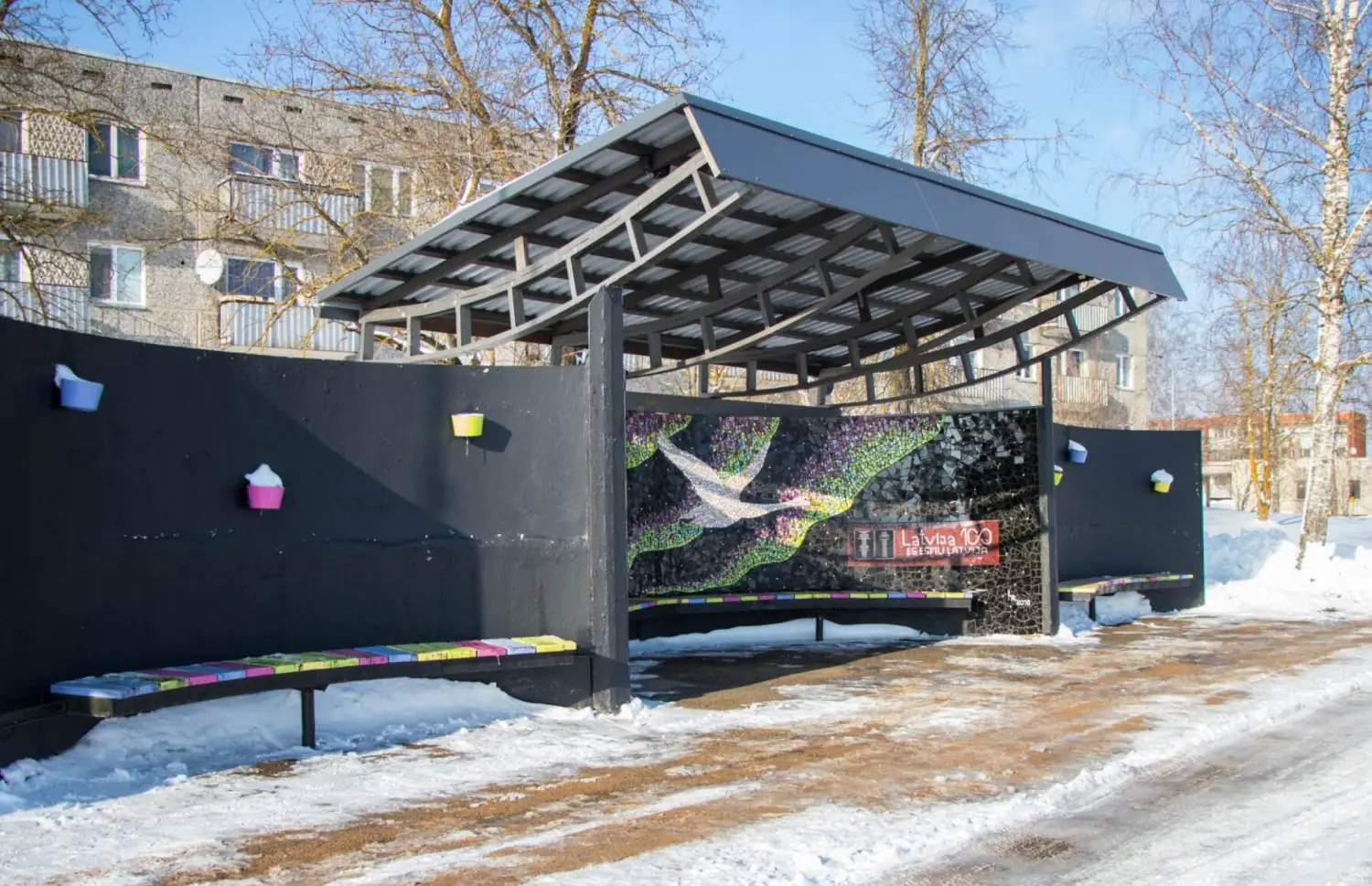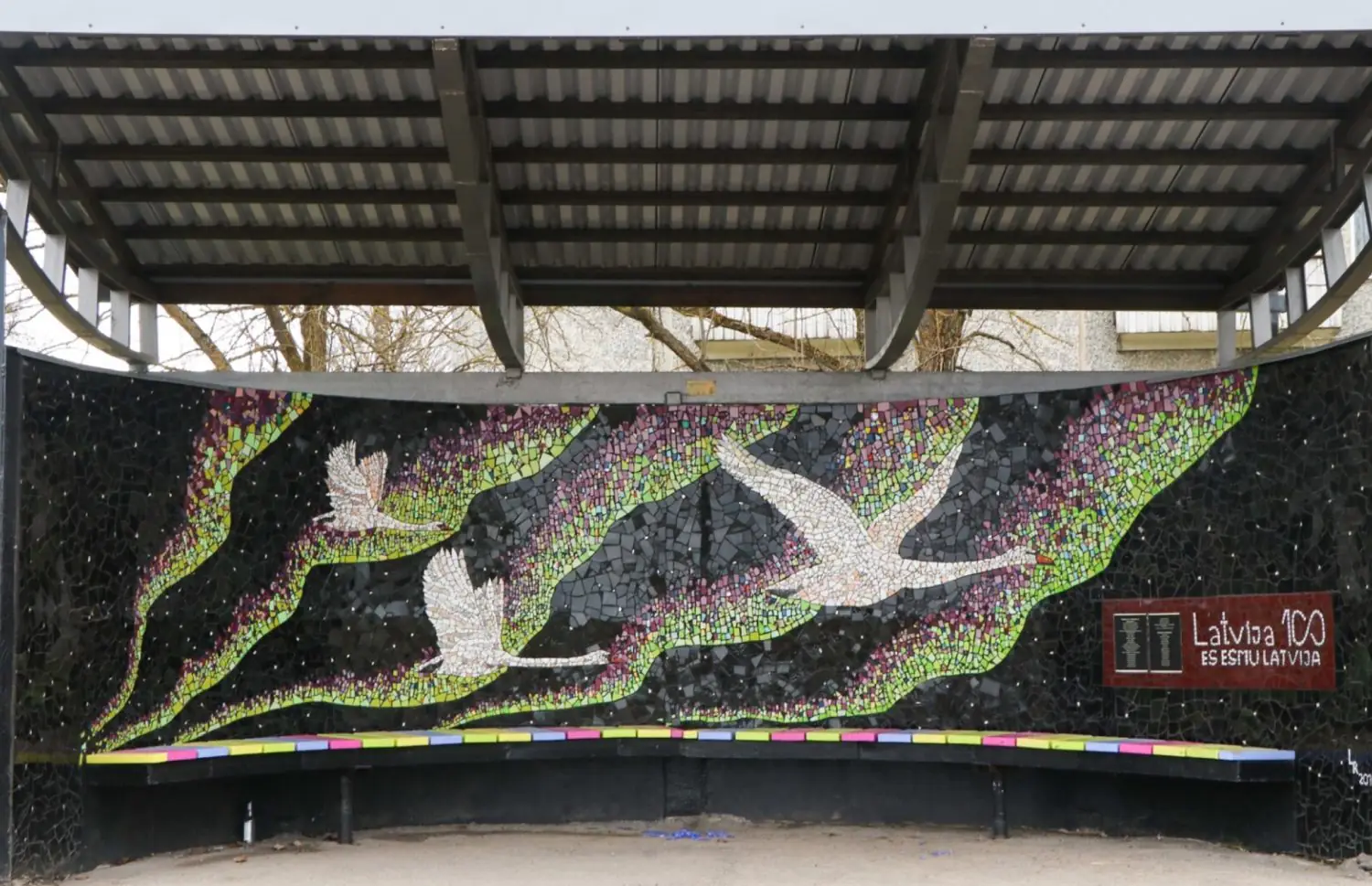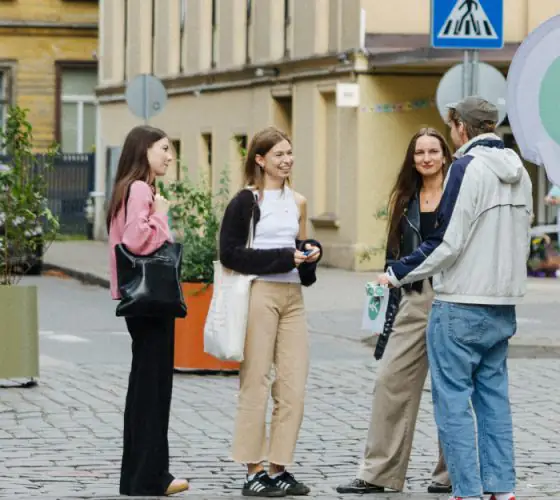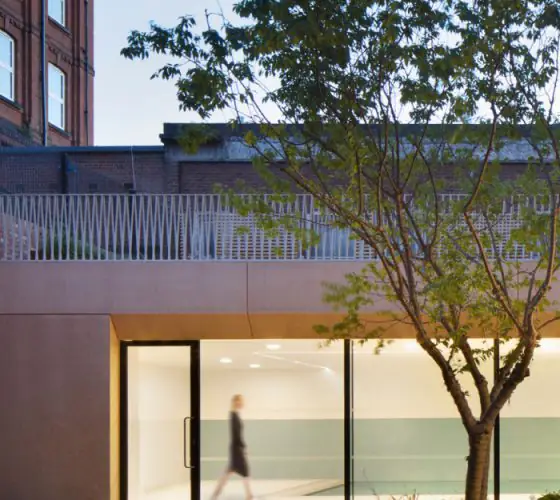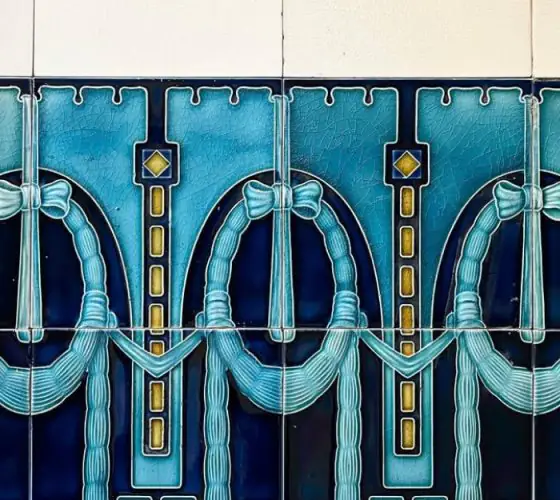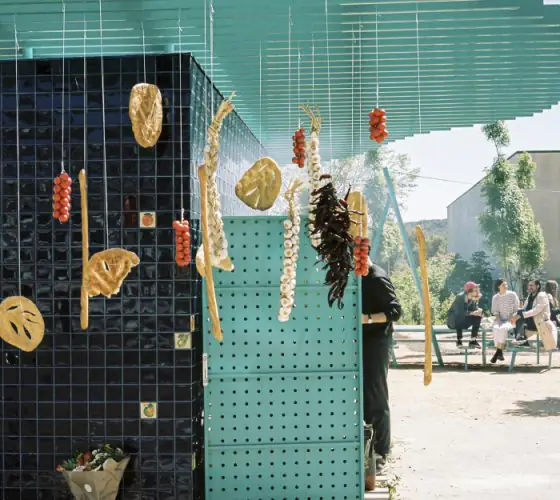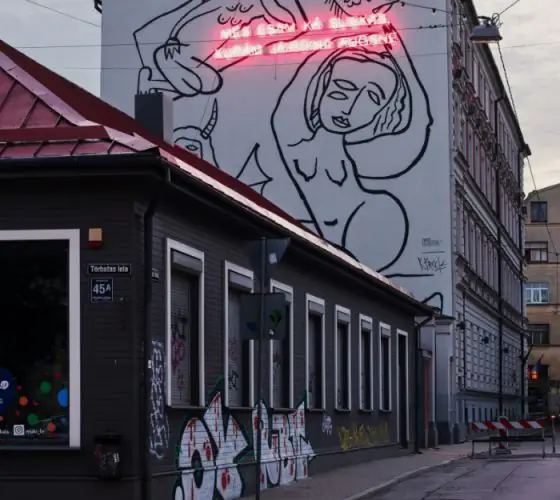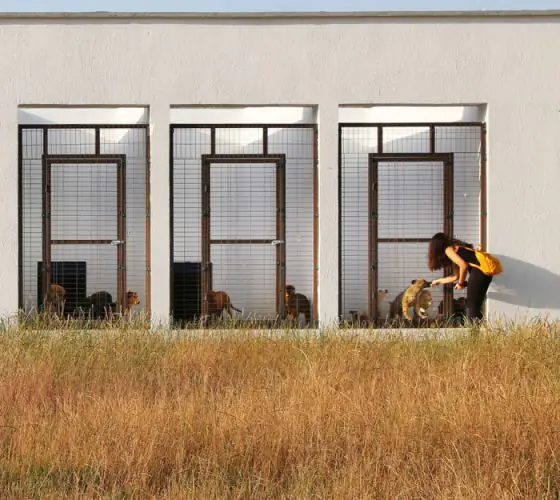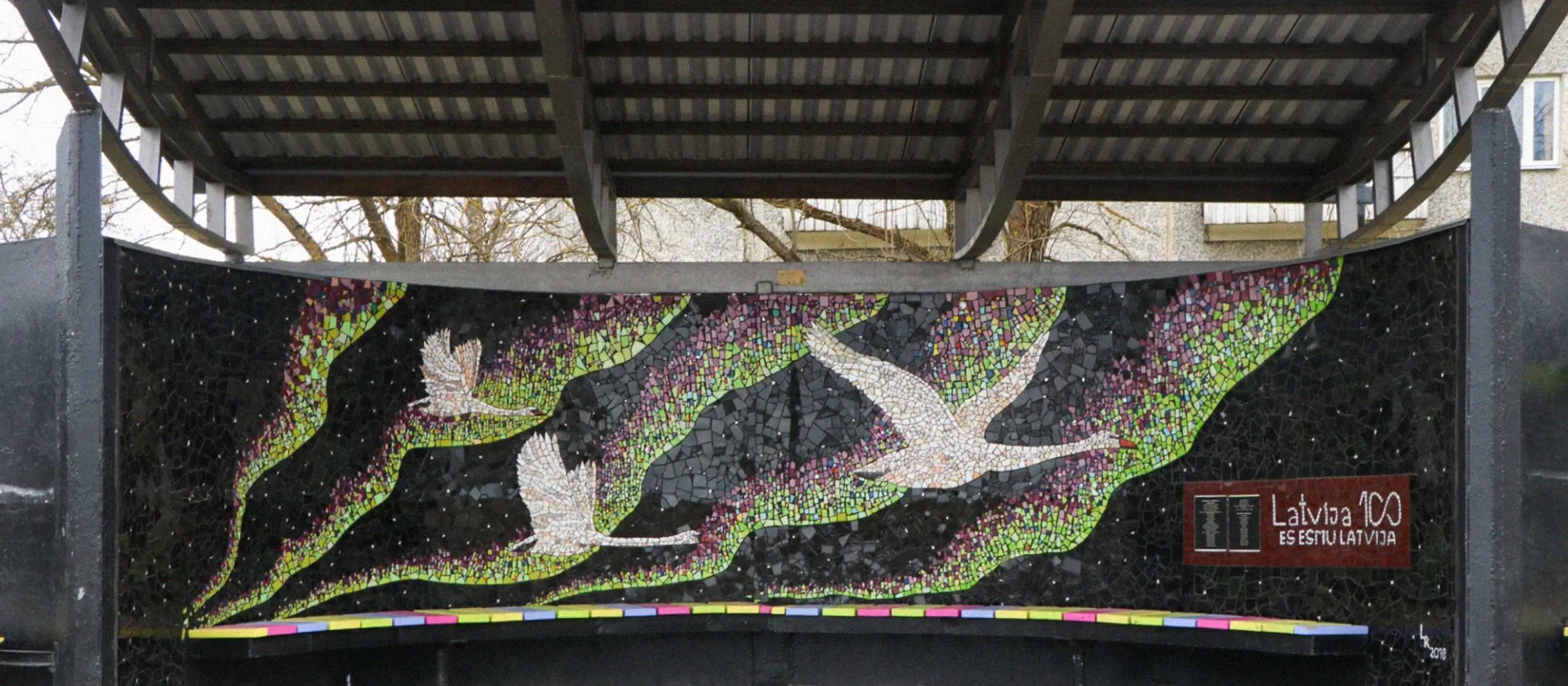
visitgulbene.lv
About the Map of Bus Stops in Latvia
The map shows existing and recently lost bus stops designed and built from the late 1960s to the present day. Unfortunately, no earlier surviving bus stops were found.
Right now, there are about 90 interesting architectural sites marked on the map, but researchers are sure that there are plenty of others that have been overlooked so far. If you know of a unique stop and couldn’t find it on the map, be sure to message us on Instagram: @tom.pervy.
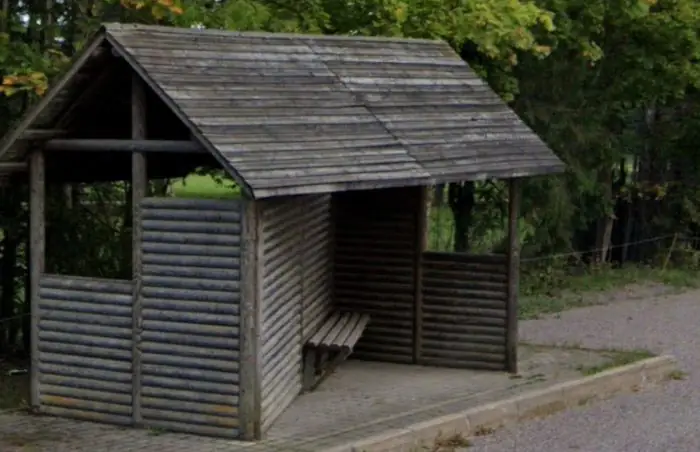
It should be noted that the criteria of interesting architecture is a very abstract concept and, first of all, is based on different experiences of interaction with cultures of different countries. The division of any objects into noteworthy and secondary is always subjective.
This selection does not pretend to be the only fair or infallible one — it is rather a curatorial choice of two researchers, so it can be treated critically and discussed with the authors: the idea is to start a discussion about bus stops that many people use but few people comprehend.
On the map, all bus stops are divided into three categories: yellow color indicates the most expressive ones, blue — mostly typical, but interesting in their design, gray — valuable, but recently lost. Each is accompanied by a brief description in Latvian, Russian and English and a photo.
The map of Latvian bus stops is available here. It was compiled in February and March 2024 by Gleb Derevyanko and Aleksandr Semenov.
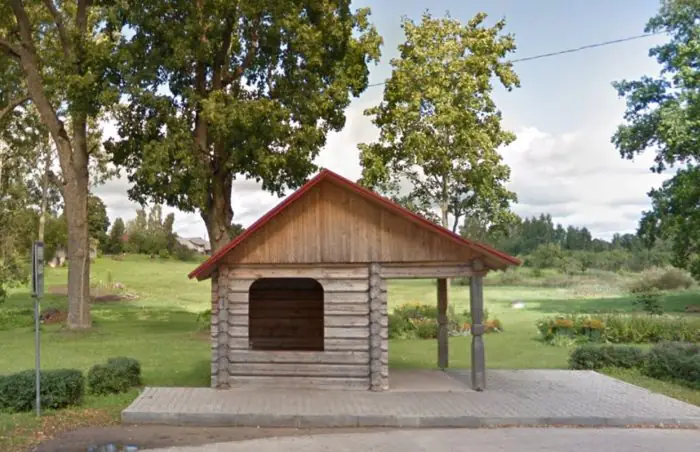
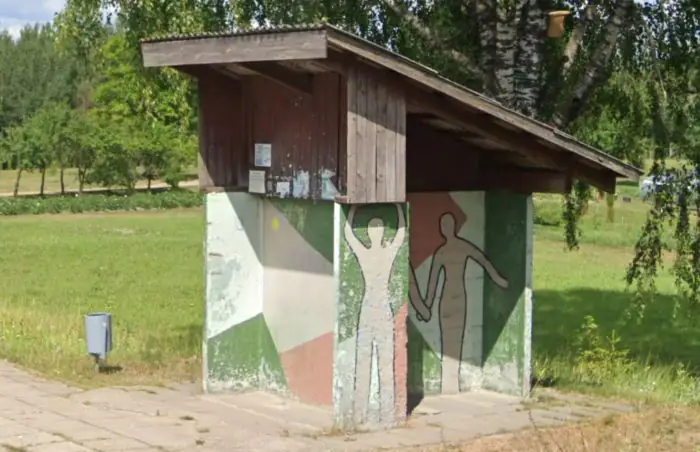
Unique Bus Stops of the Soviet Period
In the 2010s, many of Latvia’s Soviet-era bus stops were replaced with standard modern structures. Municipalities justified this decision by the dilapidation of the stops and the fact that restoration would cost too much. However, a number of stops were not only preserved, but also renovated — we tell you about some of them.
International modernist aesthetics
One of the most interesting Soviet bus stops has been preserved in the Nākotne settlement on the border of Jelgava and Dobele Municipality. In 1946 the first collective farm in the Latvian SSR appeared in this place. By the 1970s, the village of the collective farm was rebuilt according to a unique architectural project, including non-typical houses, social buildings, garages arranged in the form of an amphitheater, and the very bus stop on highway P97.
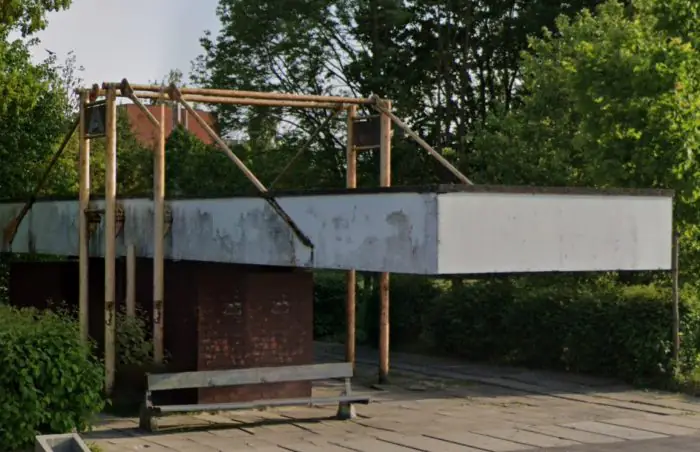
At first glance, its design may seem redundant: a long and rather massive concrete plate, acting as a canopy, is supported by four metal cables.
It is important to realize that the stop here fulfills not only a functional but also an important aesthetic role — it is a kind of front gate to a successful and exemplary kolkhoz.
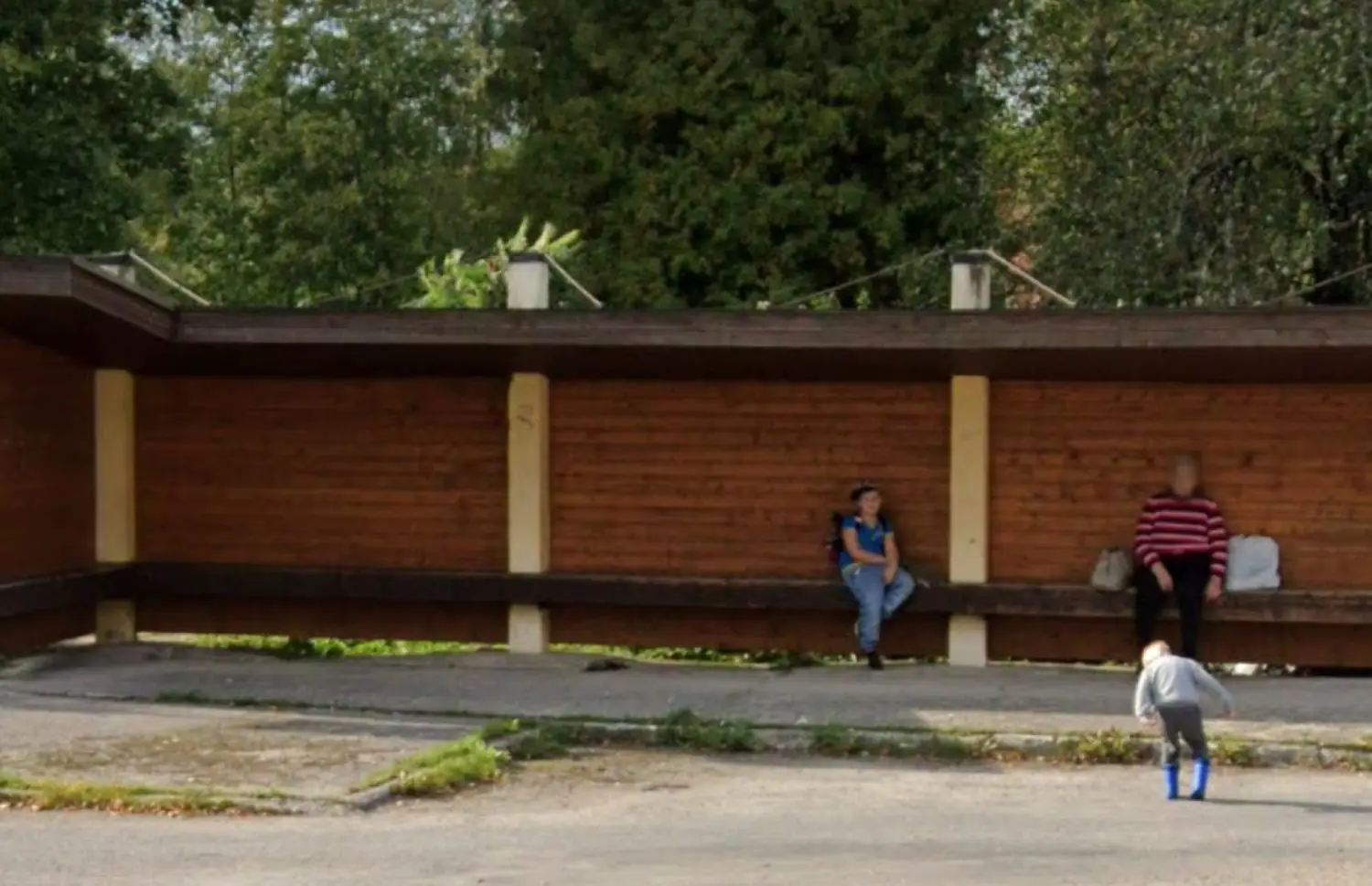
A non-typical design of a bus stop with metal cables can also be seen in Lejasciems, Gulbene Municipality. As in many other Latvian bus stops, the wooden finish of the canopy, walls and benches is important.
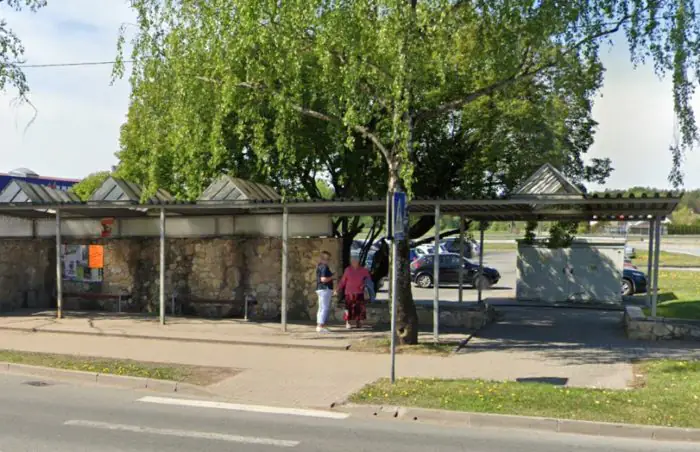
In Ādaži, a pavilion with so-called light tubes — or light pipes — has been preserved. The transparent triangular structures on the canopy (light lanterns or light wells) protect the structure from precipitation, but let in light — and this works much more efficiently than windows.
People waiting for public transportation do so in a well-lit space, but they are not threatened by rain or snow, and they can find shade in hot weather.
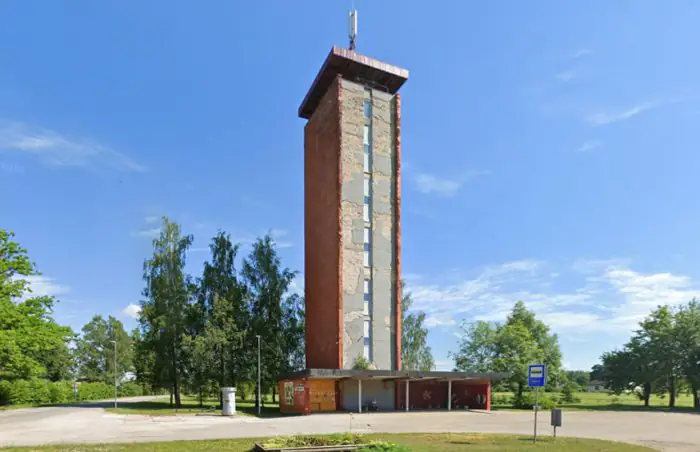
In the middle of Lēdmane there is a water tower with a bus stop built into its base. Together they form a unified and very unconventional architectural composition.
All the bus stops discussed above are designed in an international modernist spirit, which means that they could have appeared anywhere else in the USSR, and there is little regional artistic aesthetics expressed in them.
Regional Modernist Aesthetics
The second important artistic trend within the utilitarian modernist aesthetic is regionalism. The main expressive element of Latvian regionalism is the sharp triangular roof, which stylistically rhymes with medieval and folk (or vernacular) architecture. In bus stops, this motif spread during the Soviet period and continues to exist even in modern designs.
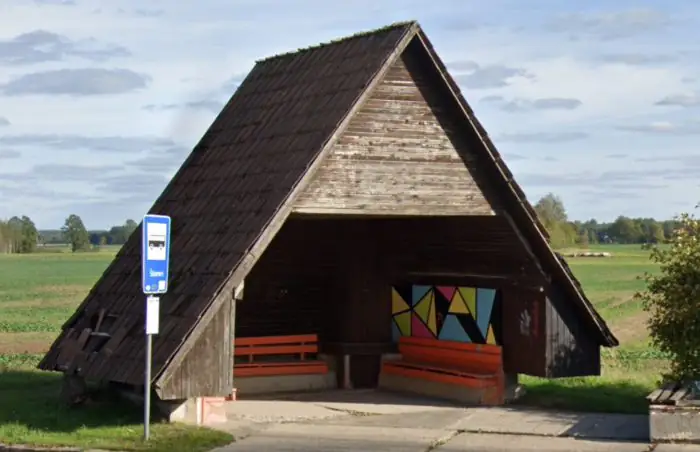
A characteristic example of a bus stop in the form of a house is in Šķieneri. In fact, it is one wooden triangular roof covered with tiles — and a place for waiting for transportation under it.
The same motif, but in different versions, can be found in many other places throughout the country. Among the most interesting is Blāzma, which had a collective farm of the same name.
The stop consists of an asymmetrical pointed roof and a trapezoidal back wall. A wall of this shape was extremely common in Soviet designs. Another variation of this bus stop can be seen in Mūrmuiža, Valmiera Municipality.
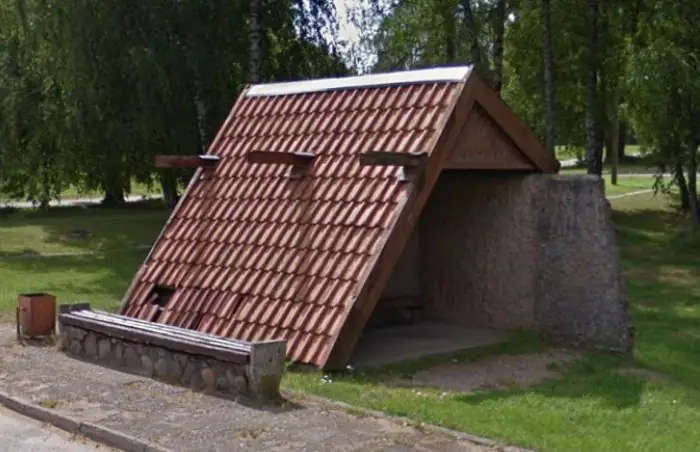
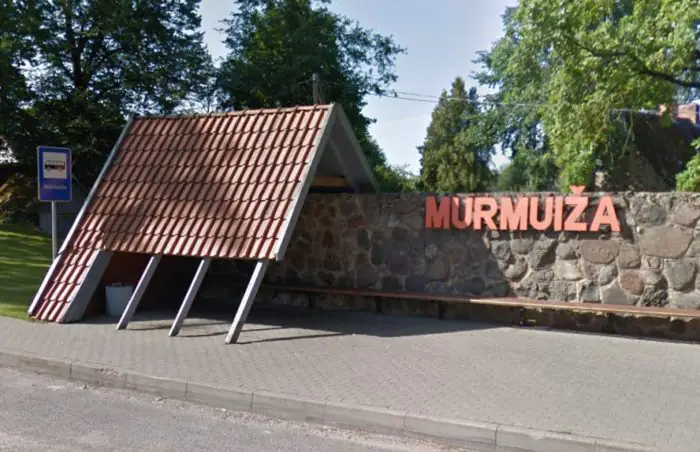
In Stende, a whole ensemble of a bus stop, a store and a toilet has been preserved. Six wooden triangular roofs in total adorn the bus stop and the store, while the toilet has two.
The bus stop in Ķemeri, consisting of three pyramidal structures, simultaneously resembles the roofs of small houses and beach sun umbrellas.
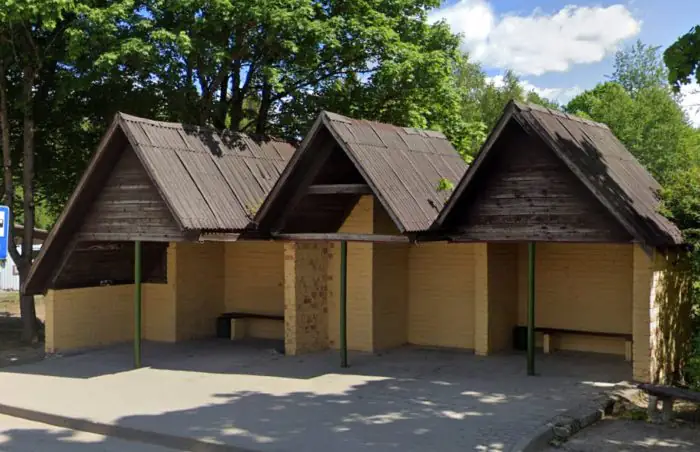
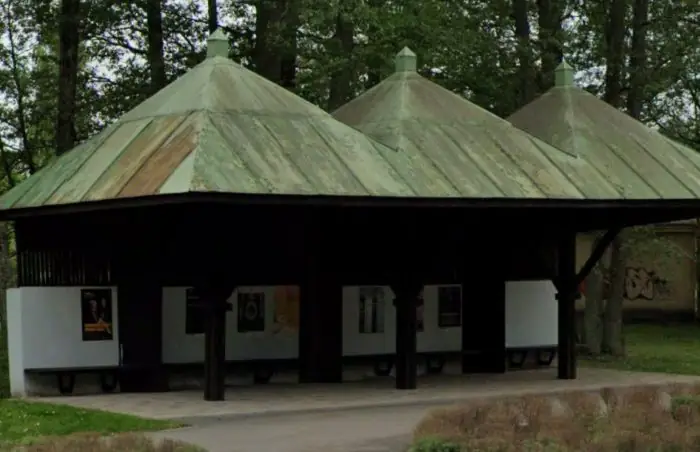
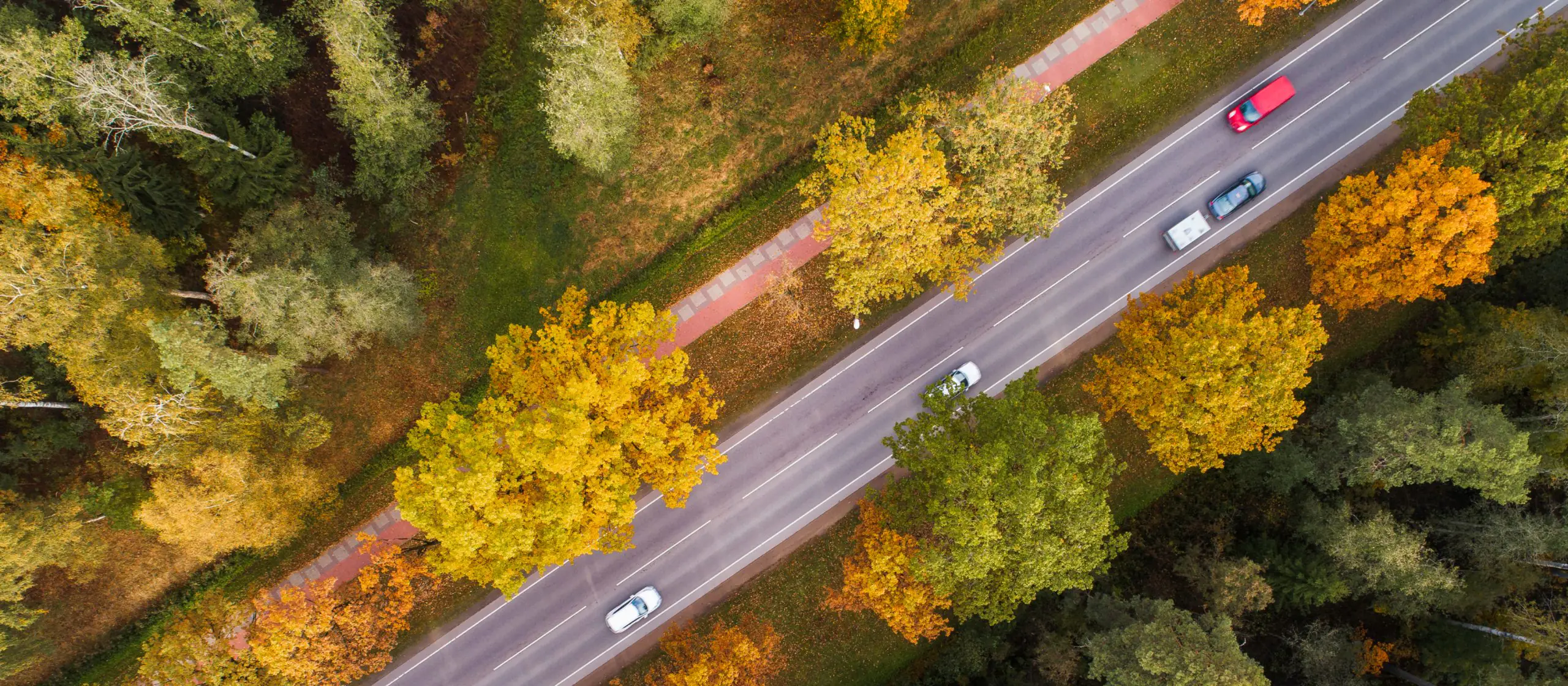
adobestock.com
Postmodern Regional Style
Unlike the modernists, postmodernist architects were much less concerned with rationalizing and formalizing traditional elements. Their projects feel more eclecticism and symbolism, built on understandable images: when looking at their buildings, more direct associations arise.
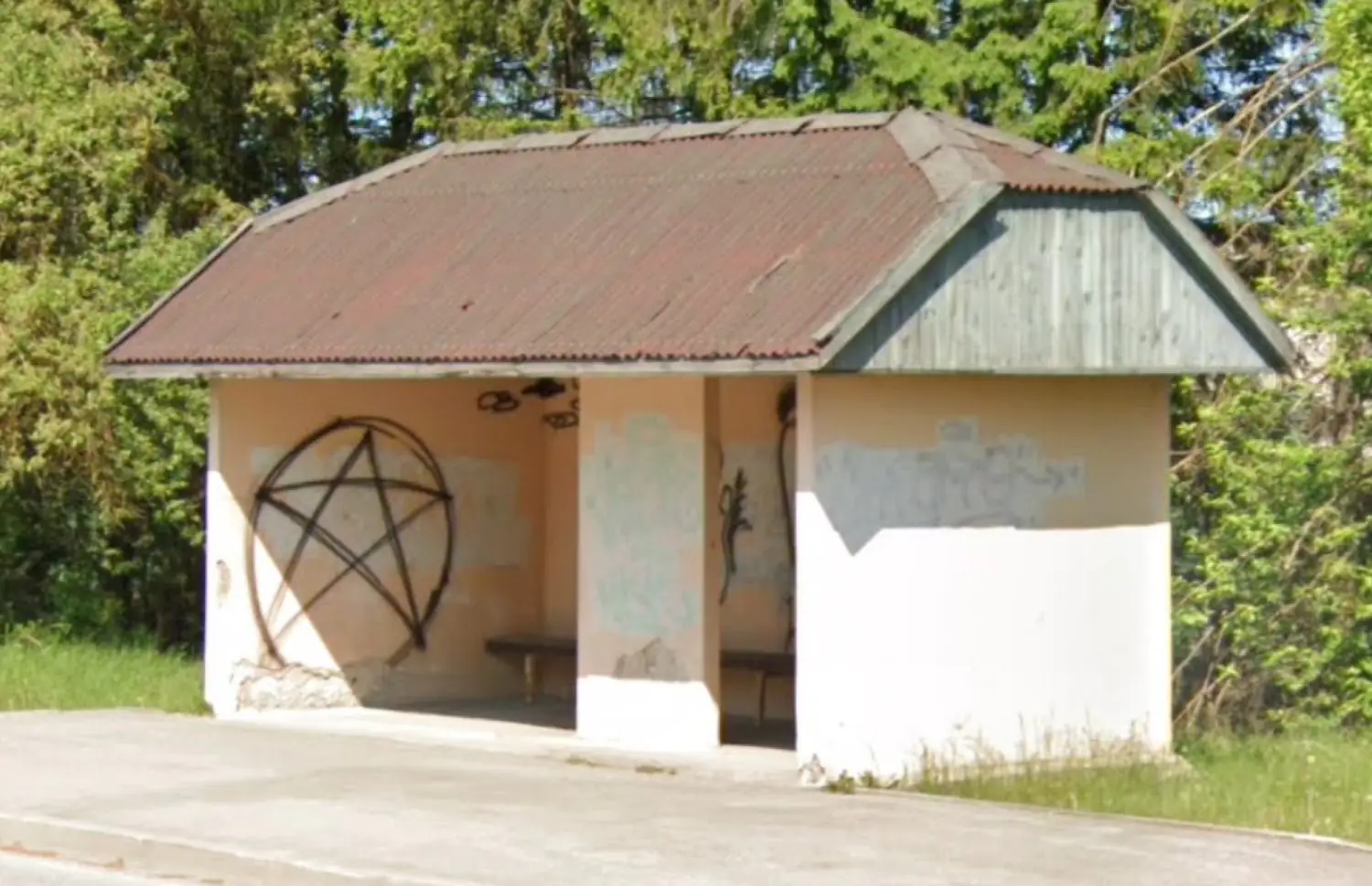
For example, the roof of the Bērzi bus stop near Saldus corresponds to a traditional Latvian roof with diagonally beveled edges.
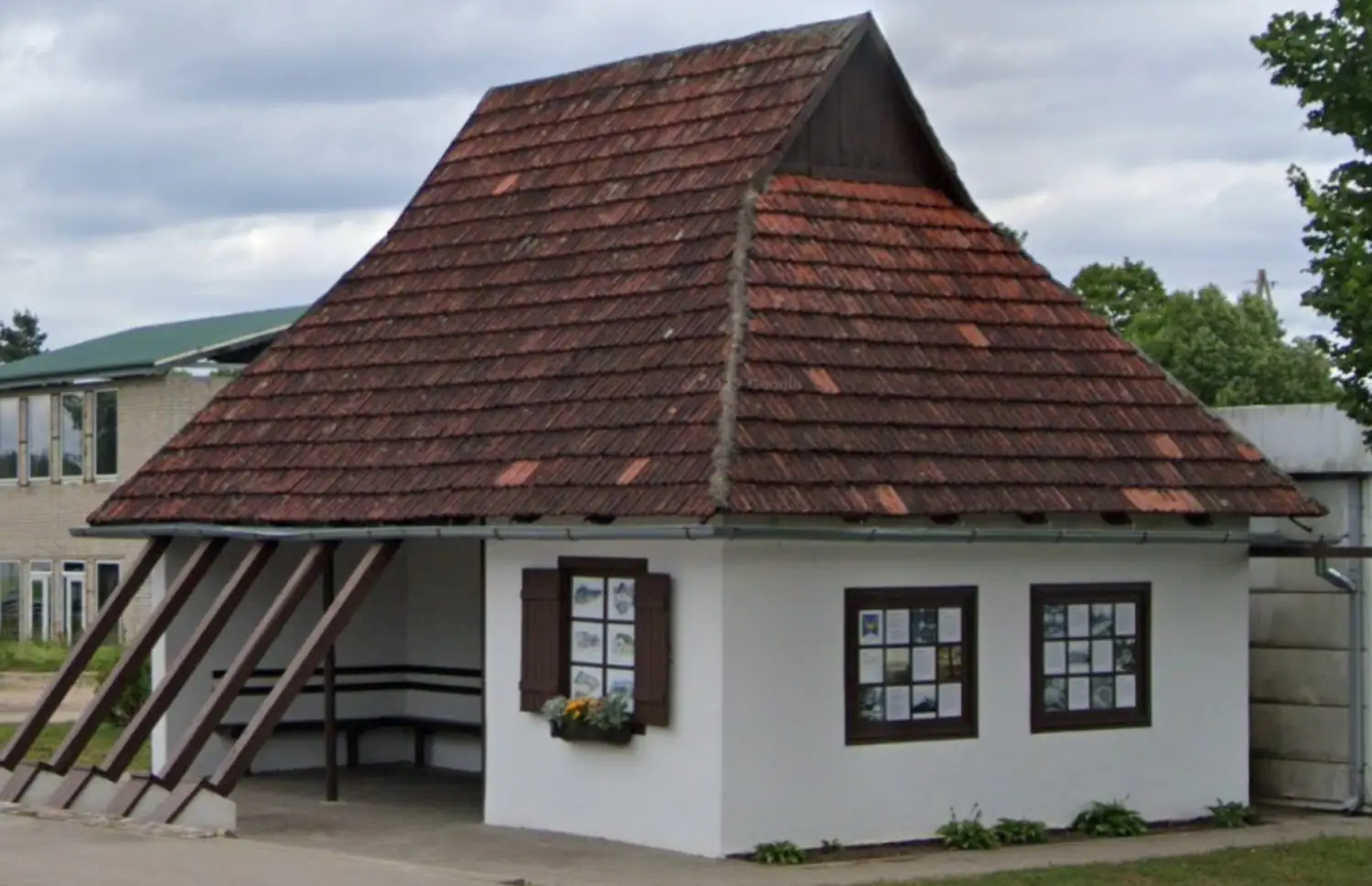
Another type of roof — also widespread in Latvia — we find in Taurene. At the bus stop there is a small room with windows, one of which has wooden shutters attached. All together, it looks more like a house on a farm, and not the usual pavilion for waiting for buses.
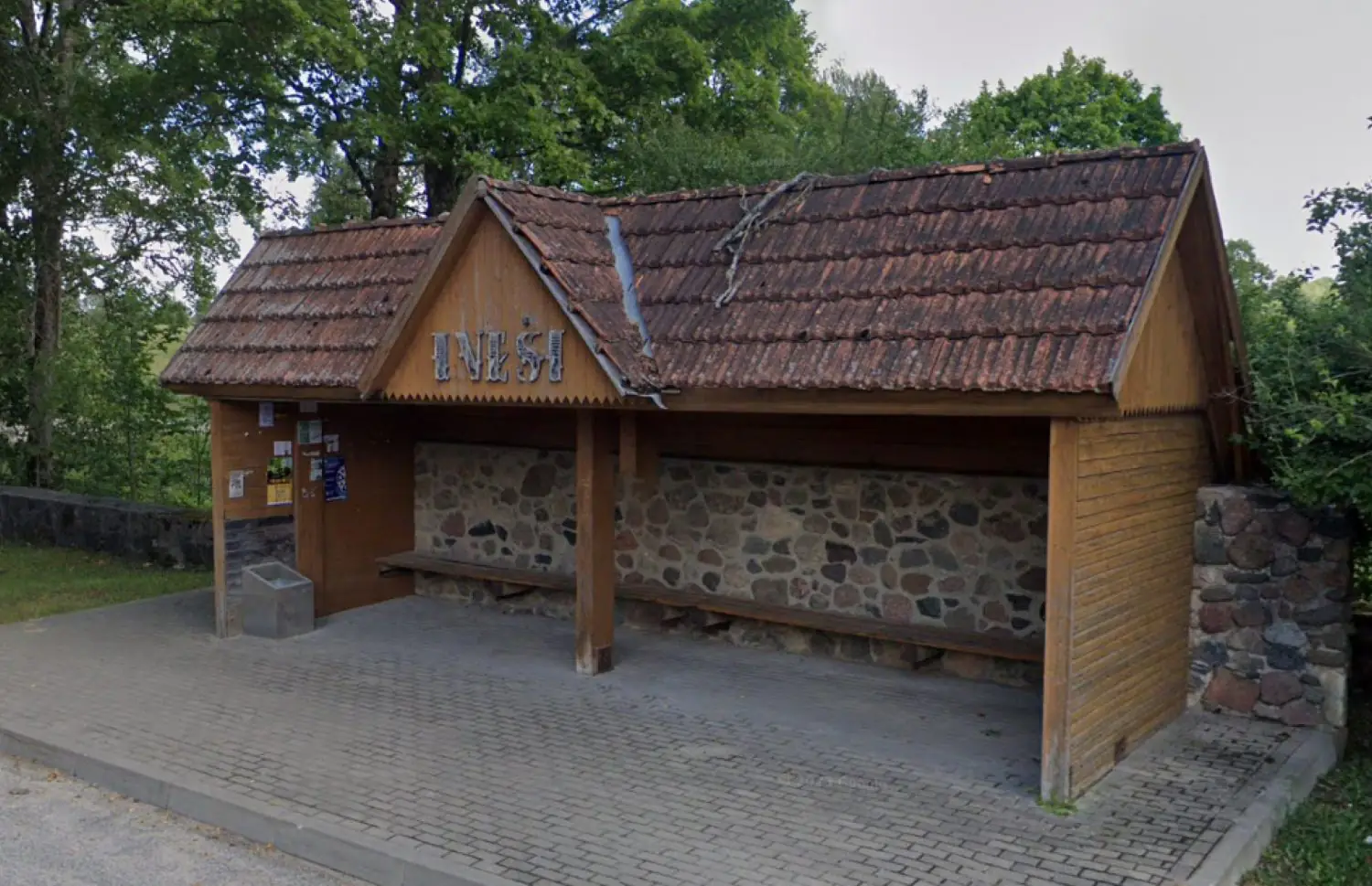
In Ineši, the boulder building motif common in the Baltic countries is combined with a stylized cross-shaped roof covered with ceramic tiles.
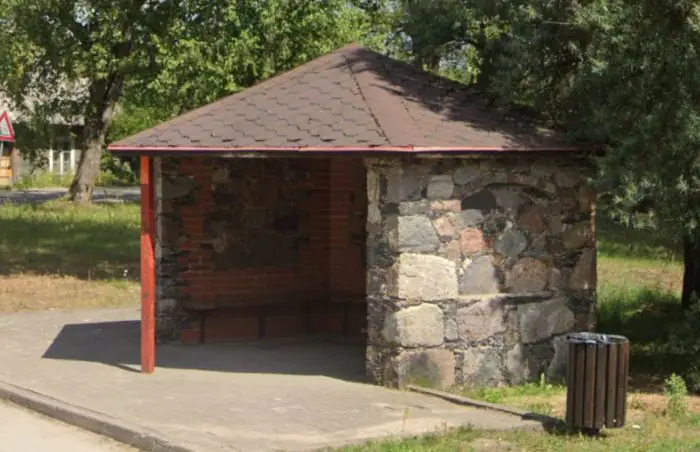
Laudona 1 bus stop is made entirely of stone boulders, like many other buildings in these parts. Shallow reliefs on the walls depict windows. But the shape of the pavilion itself is very unusual — it is a polyhedron.
In Daugavpils, on Aveņu street, a postmodern bus stop in an eclectic spirit has survived to this day. Initially, it was decorated with a small decorative element in the form of a stepped triangle, but between 2011 and 2019 the building was reconstructed. In its current form, it is more similar to the Roman Palazzo della Civiltà Italiana built in 1937.
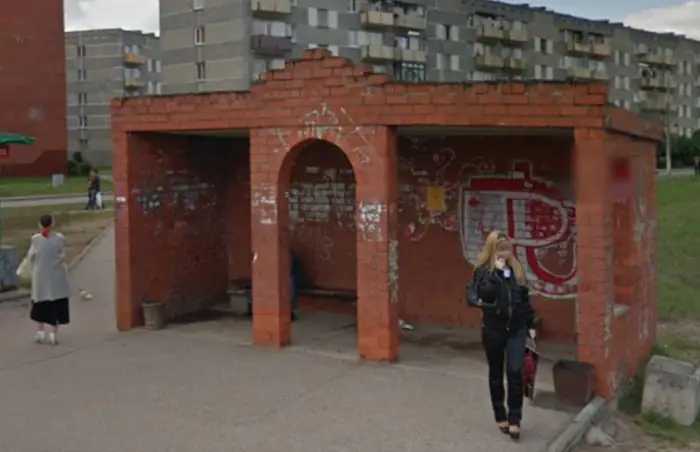
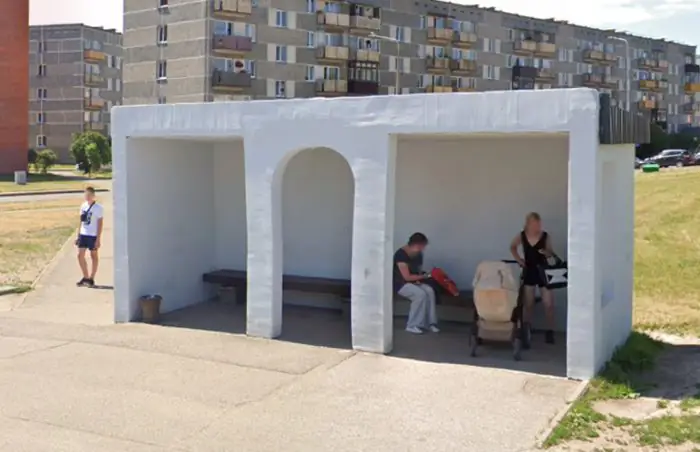
Unique Stops in Independent Latvia
In independent Latvia, the tradition of creating wooden stops in the spirit of regionalism continued in new projects. In Baltinava, a hexagonal pavilion supported by thick wooden columns appeared in the 2010s.
The private initiative of the residents of the Smiltene Municipality, popularly called «The Hobbit House» deserves special attention. In the summer of 2017, in the town of Varicēni, the Krīgeru family and their neighbors jointly created a bus stop made of straw, clay, branches and logs with colored glass bottles included. Grass grows on the roof. This is a kind of eco-project created in the spirit of upcycling — reusing various items. The stop was a gift for the celebration of the 100th anniversary of Latvia.

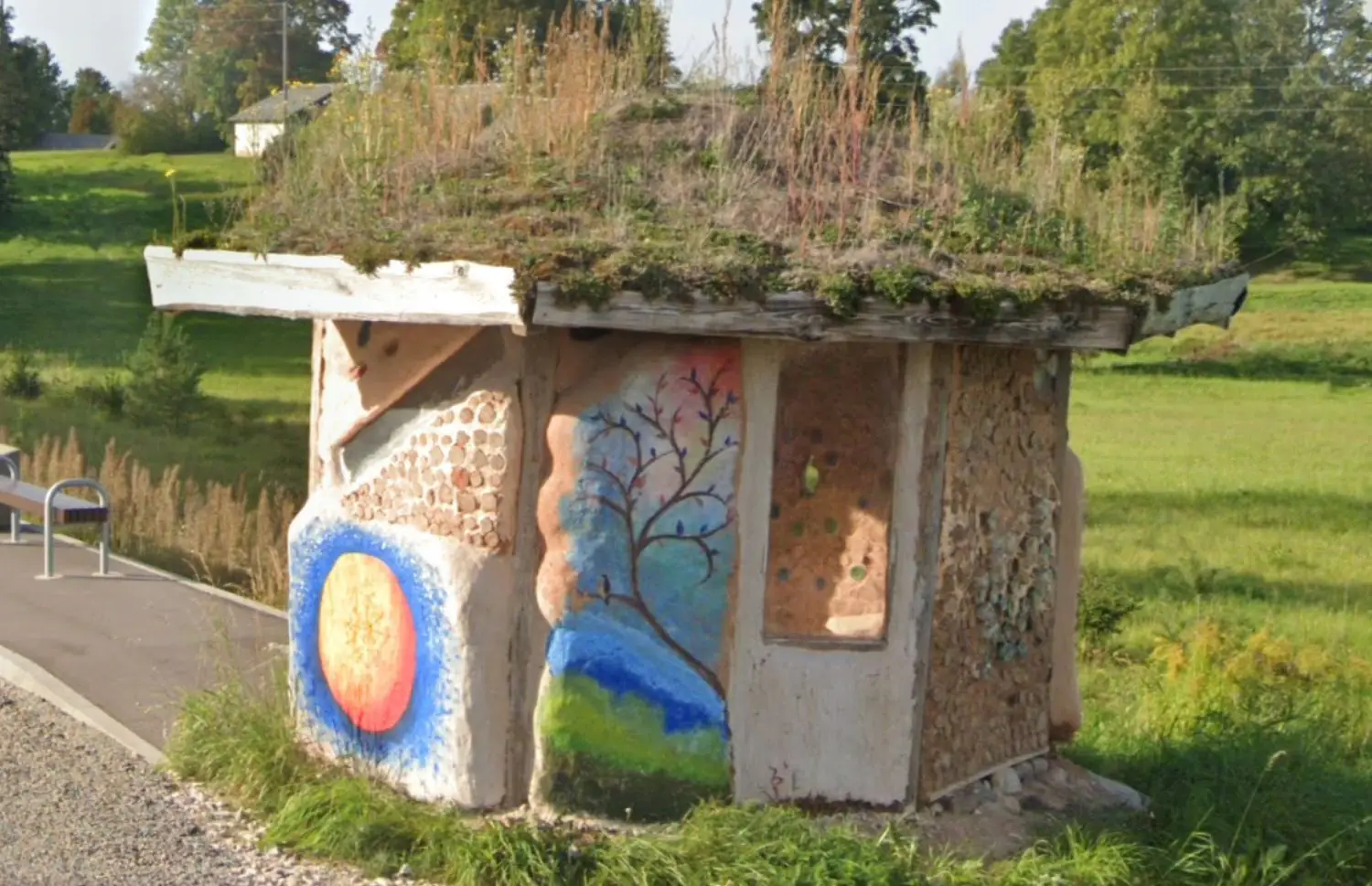
The Most Interesting Typical Bus Stops
Some typical and once replicated objects become unique over time, since they remain in one or several copies. This happened with a number of Soviet bus stops.
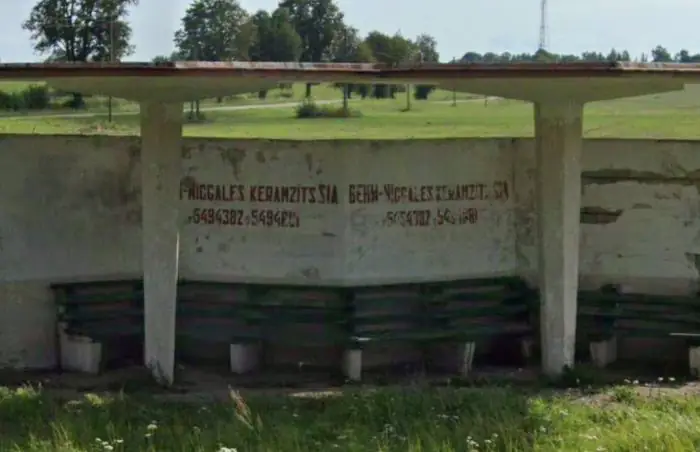
In Nīcgale there is a preserved bus stop that resembles two interconnected concrete beach umbrellas.
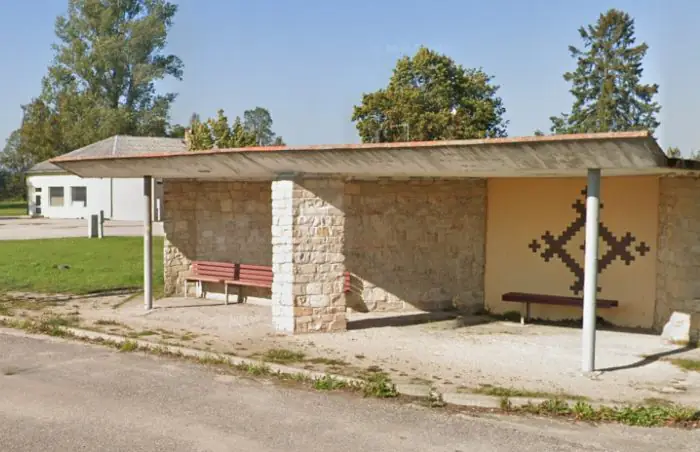
In another part of Latvia — in Grūndzale — there is a bus stop made in the form of a lightning. Two parallel walls made of stones are connected by a diagonal connection, which creates a dynamic image. A similar form is found in several Latvian places.

The elegant bus stop with a wavy roof, reminiscent of the flapping wings of a seagull, has been preserved in at least two places: on the highway in Lūšacrogs and in Jaunpils.
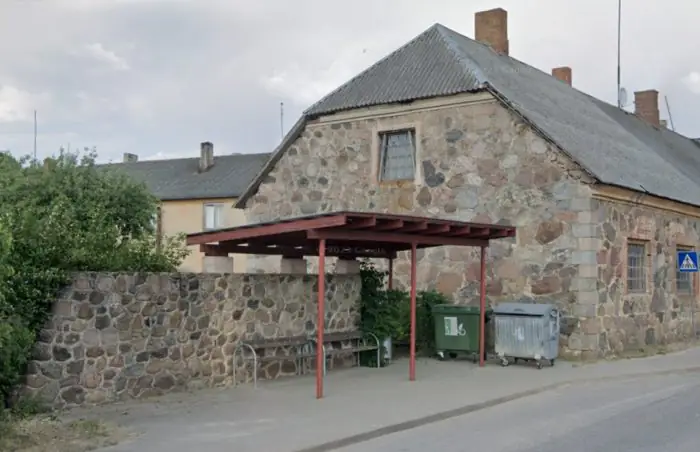
One of the most common types of bus stops consists of a trapezoidal wall (most often made of boulders) and a rectangular canopy. In Rujiena there is an interesting example of this design, which fits well into the surrounding context — the stop rhymes with the walls of the house next to it.
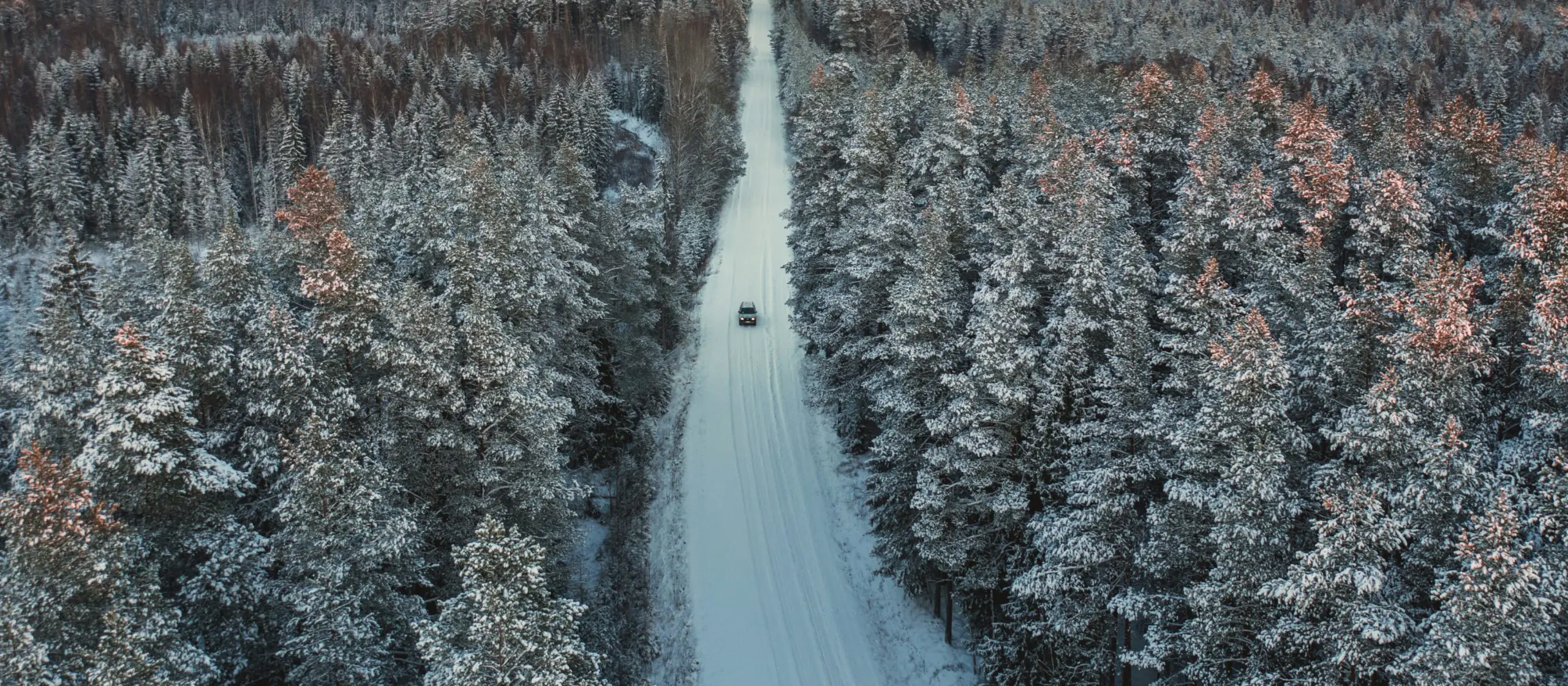
adobestock.com
Recently Lost Stops
Many distinctive bus stops were removed between 2011 and 2019 as a result of road reconstruction. Among them there are both standard and unique.
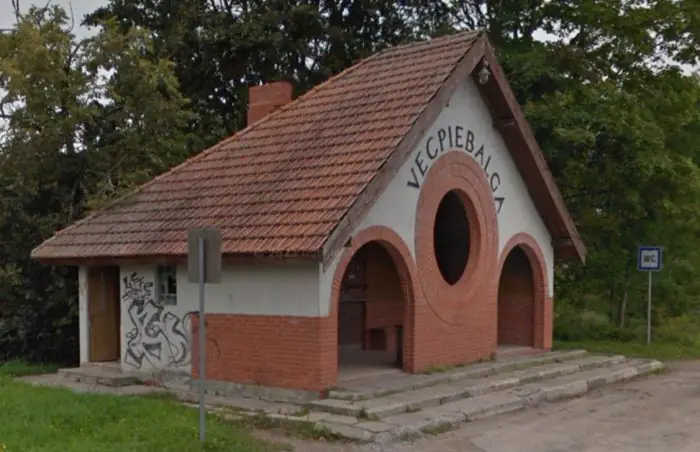
In Vecpiebalga there was a pavilion for waiting for buses, decorated with a round window and two arched portals framed in red brick. At the bus stop there was a ticket office heated by a furnace. The flavor of the building was added by a pipe protruding from the triangular roof and ceramic tiles.
Until the 2010s, there were many Soviet bus stops in Ogre, made in the same style. They were united by expressive inclined elements and triangular structural elements.
The trapezoidal bus stop in Viļķene was going to be dismantled by June 2023, citing the fact that the old structure was too expensive to restore and maintain in proper condition.

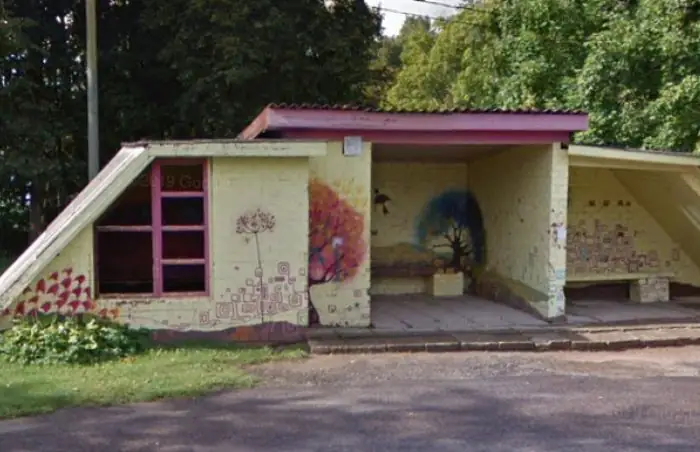
The Practice of Renovation and Decoration of Soviet Bus Stops
Many bus stops built during the Soviet years were reconstructed in the late 2010s to coincide with the celebration of Latvia’s centenary. As a rule, they were covered with paintings, and less often with mosaics.
One of these facilities is located in Šķieneri. For the celebration of the centenary of Latvia, the central part of the building was decorated with a mosaic depicting flying swans — birds associated with the neighboring town of Gulbene. And on the sides of the image, pots with plants are carefully hung.
To celebrate the centenary of Latvia, the Ļaudona II bus stop was also reconstructed and painted. Graffiti on the theme of the contrast between a multi-storey city and a flourishing village stretched for several meters. There was even a local television report about this event.
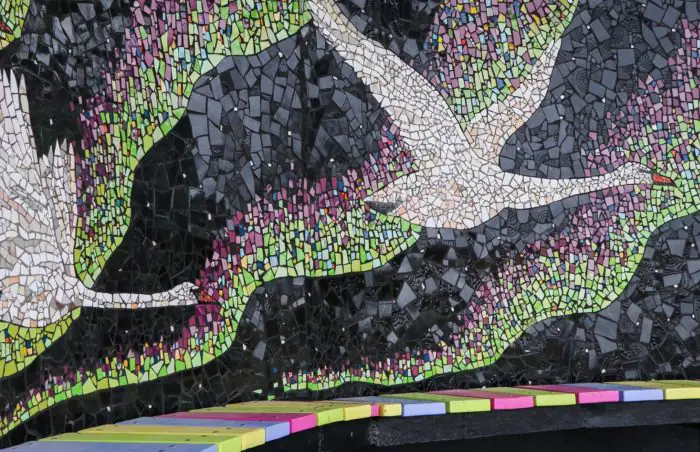
visitgulbene.lv
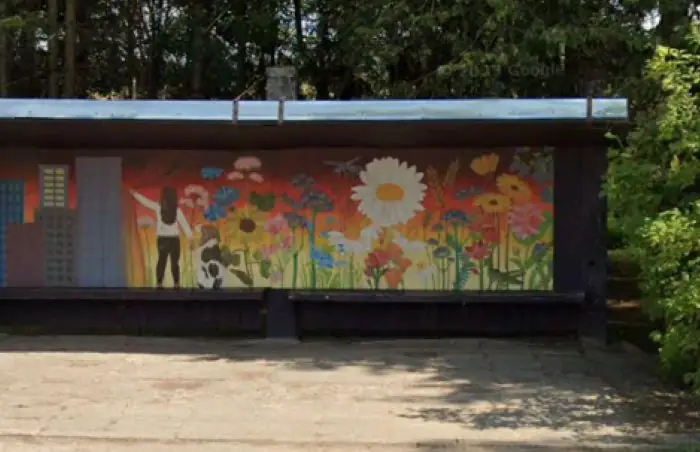
Bonus: Sēlija’s Stop Design Code
A separate design code for bus stops developed in the Sēlija region, or more precisely in the Jēkabpils Municipality. Pavilions in the form of wooden log houses with an expressive triangular roof and decorative elements characteristic of rural architecture are widespread here. One such example is located in Liepas.
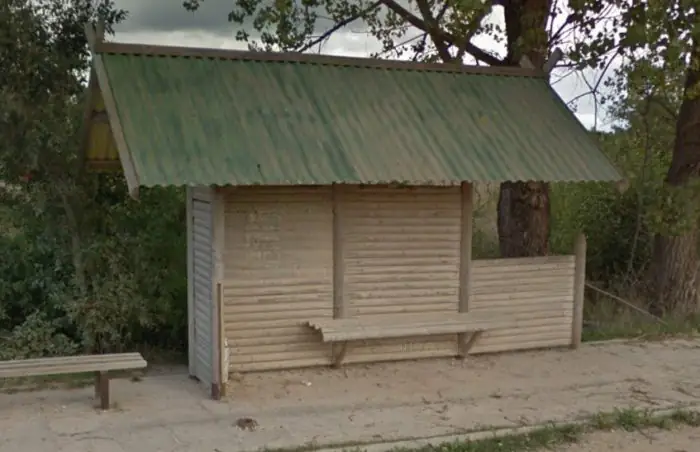

In the Jekabpils municipality there are also unique stops with the already familiar triangular roofs and boulder walls, which stylistically echo the local private houses. The most interesting examples can be seen in Zasa, Dunava and Elkšņi.
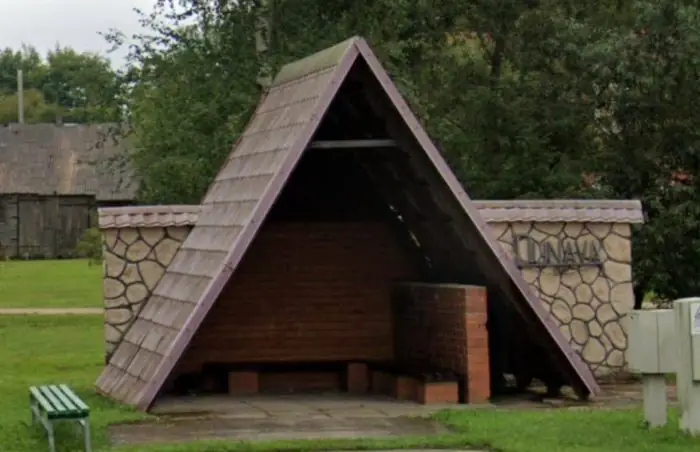


adobestock.com
Hope that we’ll find many more interesting Latvian bus stops and add them to the map — we will be glad to see your recommendations. If you know some interesting stop, but didn’t find it on the map, be sure to write on Instagram: @tom.pervy.


